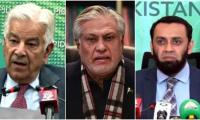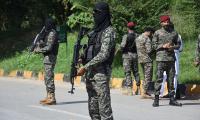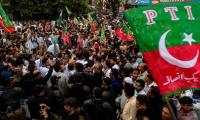Hardly any conference or event discussing socio-economic and political challenges of Pakistan goes without acknowledging its vast, untapped asset – the youth. While it is encouraging to see government officials recognising this valuable resource, one must question whether both federal and provincial governments are genuinely serious about harnessing this potential.
One of the main indicators of our rulers’ commitment to this issue is education, which lies at the core of human capital development. Recently, at an international conference on education system strengthening, I heard the chairman of the Higher Education Commission (HEC) Pakistan remark that there is pervasive negativity surrounding the country. For this reason, he said he chose to emphasise positive developments in Pakistan’s universities over the past two decades.
Among these, the structural transformation of the Universities Grants Commission into the fully independent HEC marked a pivotal change. Since then, the number of universities have grown from 51 to 244, and research publication has surged from 850 to around 40,000 – a remarkable increase, though the quality of these publications remains a top for a debate. In terms of gender equity, the enrollment gap has also narrowed, with 48 per cent female and 52 per cent male students.
However, despite these achievements, budget constraints overshadow much this progress. Only 0.24 per cent of GDP is allocated to higher education, and less than 2.0 per cent to education overall – a meager allocation that reflects the low priority given to education in the national agenda.
Another question arises: Are our universities equipping students with the necessary knowledge and skills to participate effectively in the modern economy and contribute to societal transformation? For now, we will try to analyse higher education in Pakistan on the basis of the available data across two broad indicators of access and quality.
Although the number of universities has significantly increased over the past two decades, overall access to higher education remains low and fragmented, with visible regional disparities. Despite various efforts and good intentions, total enrollment across all universities and degree colleges in Pakistan stands at approximately 2.4 million. Given that current enrollment across all educational levels is roughly 53 million, higher education enrollment works out to only 4.5 per cent. In other words, if 100 students enter primary education, only five continue to university.
The overall participation rate in higher education hovers between 4.5 and 5.0 per cent and has seen minimal improvement. As a result, despite increased enrollment, participation rates remain unsatisfactory.
In comparison to India, despite vast demographic differences, Pakistan significantly lags behind in education, though we remain comparable in defence capabilities, possessing nearly the same number of nuclear arsenals. According to the latest All-India Survey of Higher Education (AISHE) report, it has the world’s second largest higher education system with over 58,000 higher education institutions. Nearly 2,400 higher education institutions were added during 2021-22.
In India, there are now 43.3 million students enrolled for higher education, up by nearly two million students in just one year. Nearly 79 per cent of students are enrolled on undergraduate courses with 12 per cent at the postgraduate (master’s degree) level. Only 0.5 per cent were studying for a PhD, with most of the rest studying for sub-degree diploma programmes. Compared to five years ago, an additional 6.7 million students have enrolled which amounts to an 18 per cent increase. The student participation rate or the gross enrolment ratio (GER) in higher education has increased to 28.4 per cent. This is a 1.1 per cent point increase from 2020-21. The states/union territories with highest GER are Chandigarh, Puducherry, Delhi, Tamil Nadu, Himachal Pradesh, Uttarakhand, Kerala and Telangana.
While India’s higher education races ahead, Pakistan’s progress trudges along at a snail’s pace. This stark contrast often makes me wonder: why do we compete with India in nuclear arsenal, but not in education or economic development?
When it comes to quality education, we seem far off the mark. We have neither made strides in innovation and creativity in science and technology, now produced social scientists capable of guiding the country out of its many crises. Social issues as poverty, extremism, and frustration have reached critical levels, with incidents of lynching now frequent.
Anger and frustration over real and perceived injustice, unfairness and discrimination continue to grow, fueled by rampant corruption, nepotism, and a system that favours the powerful. This erosion of the social fabric is worsened by universities operating in isolation, without meaningful connections to society.
Ideally, such serious social issues should be rigorously studies and discussed on university campuses with a scientific approach, but instead, universities have become mere ‘degree mills’.
The chairman of the HEC himself cited political interference as a major barrier, with every ruling party seeking to install its own ‘person’ at the top. Consequently, university leaders often serve the interest of political powers rather than focusing on students, faculty, or institutional advancement. Recently, 70 universities have been without vice-chancellors, which only adds to the struggles of Pakistan’s universities in achieving global recognition – they are unsurprisingly absent from the top 500 world rankings.
To transform universities into genuine knowledge hubs, we need institutions that inspire not only individual success but also a commitment to the social progress. I remember a conversation with then vice-chancellor of University of Sindh Jamshoro, who shared that there are 250 foreign-qualified faculty members in the university. Despite their qualifications, however, their presence had not visibly impacted Jamshoro, the education city, nor significantly transformed the university itself. Knowledge alone is not enough; faculty and students need to embody a new mindset and commitment to the society as well.
At the same event, Federal Minister for Planning Development and Special Initiatives Ahsan Iqbal reminisced about a time when Pakistan was a destination for foreign students seeking higher education. Students from countries like Malaysia, who couldn’t study in the US or Europe, often chose Pakistan as their next option. However, we cannot go back to an ‘old Pakistan’ nor can we pursue the notion of a ‘new Pakistan’; this debate must end. What we need is a sincere effort to develop a prosperous and intellectually vibrant nation.
The writer is an education
expert and can be reached at:
asgharsoomro@gmail.com
Data, today, defines how we make decisions with tools allowing us to analyse experience more precisely
But if history has shown us anything, it is that rivals can eventually unite when stakes are high enough
Imagine a classroom where students are encouraged to question, and think deeply
Pakistan’s wheat farmers face unusually large pitfalls highlighting root cause of downward slide in agriculture
In agriculture, Pakistan moved up from 48th rank in year 2000 to an impressive ranking of 15th by year 2023
Born in Allahabad in 1943, Saeeda Gazdar migrated to Pakistan after Partition







